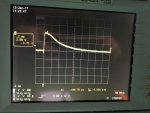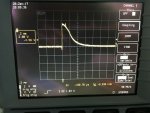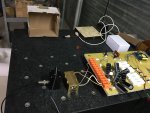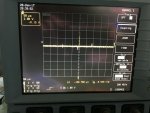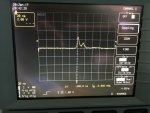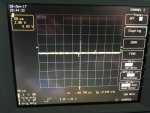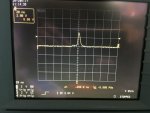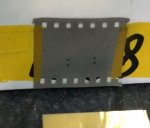Two pulses, with the first one being small, is probably due to lensing from self adsorption in the CR:YAG. First starts to bleach, then heats up causing lensing, adsorption, diffraction, or scatter, then finally fully bleaches and lases.
It is not uncommon to see poorly designed Q-Switched lasers "ring" with multiple short pulses or fire two or three times if the pump lamp has a long duration or too much energy... If the lamp pulse can still saturate the rod every 250 uSeconds or so, the laser will fire again.
It can also come from issues with the Q-switch holdoff. That multi-pulsing used to cause me all sorts of problems with adjusting drive voltage and intra-cavity polarizer angle alignment on EO Q Switches in the field...
The mode issue suggests problems with thermal lensing, wrong external mirror radius, or you will need a mode limiting aperture intra-cavity... We solved that problem using optics that have a Gaussian reflectivity pattern across the mirror, aka a "Bullseye" coating. I'm not sure you can get those in China yet..
Try shaping your lamp pulse with a small series inductor, which is almost always an air-wound coil say 5-6 cM in diameter with anywhere from three to twenty turns. IF you can adjust the lamp current for "critical damping" with a sharp risetime, you will get optimal power transfer in most cases. In which case you will probably find you need less lamps or less energy. Monitor the lamp with a photodiode, you will learn a lot. (Once you figure out how to keep the PD from saturating in those conditions)
Our systems had up to three flashlamps in series. However, that required "series injecton" triggering using a thyristor, a series inductor, and/ or a shunt diode with return capacitor to keep the trigger pulse out of the storage capacitors.
This is worthwhile reading:
http://www.orcontech.com/data/Perkin_Elmer_Flashlamp_catalog.pdf
Congrats on getting these lasing, I feared you had bought some expensive paperweights...
Steve




